Bostock, William Dowling, born on 05-02-1892 at Surry Hills, Sydney,  the third child of William Masefield Bostock, a clerk from England, and his Spanish-born wife Mary, born Dowling. Educated at The School, Mount Victoria, in June 1911 young William went to sea as a wireless operator. On 23-11-1914 he enlisted in the Australian Imperial Force
the third child of William Masefield Bostock, a clerk from England, and his Spanish-born wife Mary, born Dowling. Educated at The School, Mount Victoria, in June 1911 young William went to sea as a wireless operator. On 23-11-1914 he enlisted in the Australian Imperial Force  and was posted to the 2nd Signal Troop (Engineers).
and was posted to the 2nd Signal Troop (Engineers).  Having sailed for Egypt in December, he landed at Gallipoli on 25-04-1915, but was evacuated in August with dysentery.
Having sailed for Egypt in December, he landed at Gallipoli on 25-04-1915, but was evacuated in August with dysentery.
In Egypt in April 1916 Bostock transferred as a sergeant to the Signal Squadron, Anzac Mounted Division. Discharged from the A.I.F. on 17-02-1917, he was commissioned next day in the Royal Flying Corps Special Reserve.  William went to England to train as a pilot and in August joined No.48 Squadron
William went to England to train as a pilot and in August joined No.48 Squadron  in France. Invalided to England in March 1918, he later transferred to the Royal Air Force. For his service on the Western Front he was awarded the Belgian Croix de Guerre (1918).
in France. Invalided to England in March 1918, he later transferred to the Royal Air Force. For his service on the Western Front he was awarded the Belgian Croix de Guerre (1918). 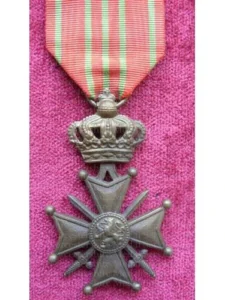 On 06-03-1919 he married his Australian fiancée Gwendolen Meade Norton (d.1947) at St Peter’s parish church, Southampton. Retiring from the R.A.F. on 22 October, he returned home and resumed his civilian career.
On 06-03-1919 he married his Australian fiancée Gwendolen Meade Norton (d.1947) at St Peter’s parish church, Southampton. Retiring from the R.A.F. on 22 October, he returned home and resumed his civilian career.
On 14-09-1921 Bostock was appointed flying officer in the newly-formed Royal Australian Air Force  and posted to No.1 Flying Training School, Point Cook, Victoria.
and posted to No.1 Flying Training School, Point Cook, Victoria. 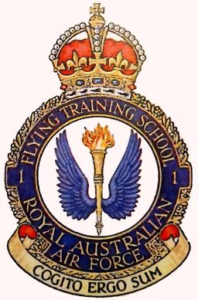 William was in England in 1926-28, attending the R.A.F. Staff College, Andover; while there, he was promoted squadron leader. After a further posting to Point Cook, in December 1929 he became director of training at R.A.A.F. Headquarters, Melbourne. Moving to New South Wales in November 1931 to command No.3 Squadron at Richmond, he was also station commander from 1933. Next year he was promoted wing commander and in 1935 was appointed O.B.E. In 1936 he went to England on exchange with the R.A.F. Back in Melbourne in 1938, he took over as director of operations and intelligence; promotion to group captain followed in September. One year later, on the eve of war in Europe, he was appointed deputy chief of the Air Staff.
William was in England in 1926-28, attending the R.A.F. Staff College, Andover; while there, he was promoted squadron leader. After a further posting to Point Cook, in December 1929 he became director of training at R.A.A.F. Headquarters, Melbourne. Moving to New South Wales in November 1931 to command No.3 Squadron at Richmond, he was also station commander from 1933. Next year he was promoted wing commander and in 1935 was appointed O.B.E. In 1936 he went to England on exchange with the R.A.F. Back in Melbourne in 1938, he took over as director of operations and intelligence; promotion to group captain followed in September. One year later, on the eve of war in Europe, he was appointed deputy chief of the Air Staff. 



As Air Chief Marshal Sir Charles Burnett’s 
 ‘right-hand man’, Bostock gained rapid advancement to temporary air commodore (June 1940) and substantive air vice marshal (01-10-1941); he was to be appointed C.B. in January 1942. Burnett’s tour was due to expire and it was clear that he wanted Bostock to succeed him as chief of the Air Staff. On 08-12-1941 the Japanese entered the war. After victories in Malaya, the Philippines, the Netherlands East Indies and New Guinea, they bombed Darwin. The Allies formed South-West Pacific Area Command under General Douglas MacArthur
‘right-hand man’, Bostock gained rapid advancement to temporary air commodore (June 1940) and substantive air vice marshal (01-10-1941); he was to be appointed C.B. in January 1942. Burnett’s tour was due to expire and it was clear that he wanted Bostock to succeed him as chief of the Air Staff. On 08-12-1941 the Japanese entered the war. After victories in Malaya, the Philippines, the Netherlands East Indies and New Guinea, they bombed Darwin. The Allies formed South-West Pacific Area Command under General Douglas MacArthur  from the United States of America. Australian combat forces in the region were transferred to the command on 17-04-1942.
from the United States of America. Australian combat forces in the region were transferred to the command on 17-04-1942.
Following an acrimonious dispute between Burnett and the minister for air Arthur Samuel Drakeford, Prime Minister John Curtin  agreed that the commander, Allied Air Forces, would have operational control of R.A.A.F. units, while responsibility for their administration would remain with the chief of the Air Staff and the Air Board. As a consequence, command of the R.A.A.F. would be divided between two headquarters. Relishing the opportunity for operational duties, on 02-05-1942 Bostock became chief of staff to the Allied Air Forces commander, Lieutenant General George Howard Brett,
agreed that the commander, Allied Air Forces, would have operational control of R.A.A.F. units, while responsibility for their administration would remain with the chief of the Air Staff and the Air Board. As a consequence, command of the R.A.A.F. would be divided between two headquarters. Relishing the opportunity for operational duties, on 02-05-1942 Bostock became chief of staff to the Allied Air Forces commander, Lieutenant General George Howard Brett,

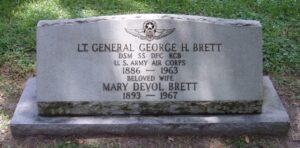 an American. Three days later Air Commodore (Sir) George Jones
an American. Three days later Air Commodore (Sir) George Jones  was promoted air vice marshal and appointed chief of the Air Staff.
was promoted air vice marshal and appointed chief of the Air Staff.
At his headquarters, which moved to Brisbane in July, Brett headed an integrated staff of Australian and American officers, and exercised operational control through the existing R.A.A.F. network of area commands. Increased activity made this arrangement cumbersome and confusing to both partners. Major General George Churchill Kenney,  who was sent from the U.S.A. to replace Brett in August, found operational procedures ‘chaotic’. It was agreed that Kenney would have two subordinate commands: the U.S. Fifth Air Force and R.A.A.F. Command. In September Kenney appointed Bostock air officer commanding, R.A.A.F. Command, responsible for the defence of Australia (other than the north-east) and for operations against Japanese bases in the Netherlands East Indies. In an attempt to end the divided command of the R.A.A.F., a complex round of negotiations ensued. Jones and Drakeford wanted the chief of the Air Staff to have overall authority. Supported by Kenney and MacArthur, Bostock argued that responsibility for the administration of units under his operational control should be transferred to him. Curtin mediated, but could not resolve the impasse.
who was sent from the U.S.A. to replace Brett in August, found operational procedures ‘chaotic’. It was agreed that Kenney would have two subordinate commands: the U.S. Fifth Air Force and R.A.A.F. Command. In September Kenney appointed Bostock air officer commanding, R.A.A.F. Command, responsible for the defence of Australia (other than the north-east) and for operations against Japanese bases in the Netherlands East Indies. In an attempt to end the divided command of the R.A.A.F., a complex round of negotiations ensued. Jones and Drakeford wanted the chief of the Air Staff to have overall authority. Supported by Kenney and MacArthur, Bostock argued that responsibility for the administration of units under his operational control should be transferred to him. Curtin mediated, but could not resolve the impasse.
 Air Vice Marshal Bostock (right) as Deputy Chief of the Air Staff with the Chief of the Air Staff, Air Chief Marshal Sir Charles Burnett, in May 1942.
Air Vice Marshal Bostock (right) as Deputy Chief of the Air Staff with the Chief of the Air Staff, Air Chief Marshal Sir Charles Burnett, in May 1942.
Dual control presented Bostock with numerous problems. Jones refused to delegate his authority over support functions needed for the conduct of operations. Disputes arose between R.A.A.F. Headquarters and R.A.A.F. Command headquarters in regard to appointments of officers, requirements for operational training, construction of airfields and camp sites, and the supply of ammunition, fuel, replacement aircraft and reserves of bombs. Units received conflicting orders while the vitriolic correspondence between Bostock and Jones continued. In March 1943 Bostock advised Kenney that ‘under the existing conditions . . . I am unable to ensure the development of the maximum fighting efficiency of my command’. The matter was again referred to Curtin, but, because he was unwilling to alienate either Drakeford or MacArthur, no changes were made.
From late 1942 the Allies had begun to repulse the Japanese. R.A.A.F. Command’s principal roles were then to protect the sea lanes to New Guinea and to maintain the offensive against the Netherlands East Indies. Exhibiting ‘exceptional tactical ability’, Bostock directed attacks by Australian—and sometimes by Dutch and American—forces which destroyed aerodromes, shipping, oil-stocks and harbour facilities as far afield as Java and New Britain, and gradually helped to gain supremacy in the air over the Netherlands East Indies. For his work to November 1944, he was awarded the American Medal of Freedom with Silver Palm. ![]()
In March 1945 Kenney gave Bostock responsibility for air-support of the projected invasion of Borneo by I Australian Corps. Bostock immediately established an advanced headquarters at Morotai, from which he controlled the R.A.A.F.’s First Tactical Air Force, the American Fifth and Thirteenth air forces, and a force of heavy bombers in Darwin and Western Australia. The Borneo landings were planned in three phases: the first against Tarakan on 1 May, the second against Labuan and Brunei on 10 June, and the third against Balikpapan on 1 July. Formidable defences, including well-placed gun sites and concrete blockhouses, had been constructed at each site. With skilful timing and handling, Bostock directed a sustained assault which so reduced the fortifications that the invading troops only suffered light casualties. He participated in the landings at Labuan and Balikpapan, and went forward to inspect the ground while fighting was still in progress. MacArthur described the Labuan-Brunei air campaign as ‘flawless’ and Bostock was awarded the Distinguished Service Order. ![]()
With the cessation of hostilities, Kenney invited Bostock to represent the R.A.A.F. at the formal surrender of the Japanese in Tokyo Bay on 2 September. ‘An able officer of driving temperament’, Bostock was regarded by contemporaries as having one of ‘the Air Force’s best brains’. Kenney recalled that, on first meeting him, he ‘looked gruff and tough . . . but he impressed me as being honest and I believed that, if he would work for me at all, he would be loyal to me’. Bostock proved the prediction to be accurate, although, under the ‘mischievous’ dual-control arrangement, it was a wonder that he had been able to perform as effectively as he did. With several other senior officers, on 19-04-1946 he was compulsorily retired, six years before his prescribed age.
Bostock bought a grazing property at Molyullah, near Benalla, Victoria. As special aviation correspondent to the Melbourne Herald, 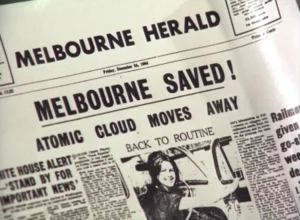 in June 1946 he wrote the ‘RAAF’s Unhappy Story’, a series of articles attacking the government and the Air Board over the divided-command issue. He contributed regularly to the Herald on air force and defence subjects throughout the late 1940s and the 1950s. Standing as a Liberal, in 1949 he was elected to the House of Representatives as the member for Indi. An active back-bencher and a member of the joint committee on foreign affairs, he often spoke on defence matters and was not afraid to criticize the Menzies government. He was defeated in the 1958 elections.
in June 1946 he wrote the ‘RAAF’s Unhappy Story’, a series of articles attacking the government and the Air Board over the divided-command issue. He contributed regularly to the Herald on air force and defence subjects throughout the late 1940s and the 1950s. Standing as a Liberal, in 1949 he was elected to the House of Representatives as the member for Indi. An active back-bencher and a member of the joint committee on foreign affairs, he often spoke on defence matters and was not afraid to criticize the Menzies government. He was defeated in the 1958 elections.
Death and burial ground of Bostock, William Dowling.
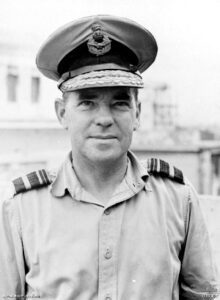



In February 1946 he had been appointed to the board of management of the Australian War Memorial, Canberra. Bostock married a 33-year-old clerk Nanette Mary O’Keefe  on 01-06-1951 at St Peter’s Catholic Church, Toorak, Melbourne. William Dowling Bostock died on 28-04-1968, age 76, at Benalla; after an air force funeral at St Paul’s Anglican Cathedral, Melbourne, he was cremated. His wife and their three sons survived him, as did the two daughters of his first marriage.
on 01-06-1951 at St Peter’s Catholic Church, Toorak, Melbourne. William Dowling Bostock died on 28-04-1968, age 76, at Benalla; after an air force funeral at St Paul’s Anglican Cathedral, Melbourne, he was cremated. His wife and their three sons survived him, as did the two daughters of his first marriage.

Message(s), tips or interesting graves for the webmaster: robhopmans@outlook.com
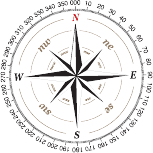







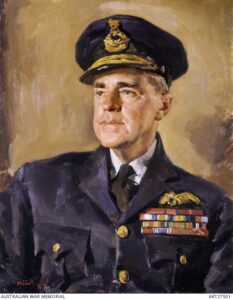









Leave a Reply